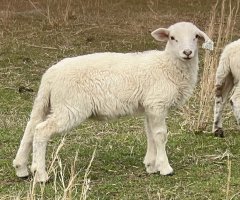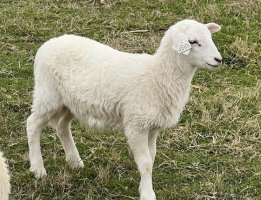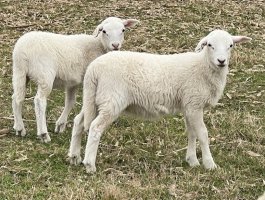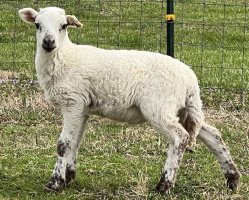farmerjan
Herd Master
- Joined
- Aug 16, 2016
- Messages
- 11,789
- Reaction score
- 47,010
- Points
- 758
- Location
- Shenandoah Valley Virginia
It is called "flushing".... most sheep people used to do it as a normal course to get ewes into better condition for breeding... about 3-6 weeks before breeding... it kicks the nutrition level up which signals the body=ovaries= to produce, mature, and release multiple eggs when their system is stimulated during the breeding season.
It was not the drought per se, it was that you were compensating for the drought conditions, with feeding "better" because there wasn't anything for them to graze and browse.... so you had "upped" their nutrition level in order to keep them in shape... and then when the conditions did not improve, you added the alfalfa and that then kicked the nutrition up a tad... hence signaling the body to go into an increased production level of eggs.
Many sheep breeders in Conn where I grew up, would turn their sheep into some fresh growing pasture about 2-4 weeks before turning in the rams... and the increased nutrition in the growing grass was like a "kick start" to their reproductive system and they would produce and release more eggs. Hence the increase in twins and triplets. Breeders wanted to achieve a 200% lamb crop average.... meaning they wanted to average twins overall the flock....
In Conn, we would get a hot spell from mid July through August... not drought like you guys got, but still it would get hot and dry. Then we would often get a pattern of rain, with hurricane season getting going up there, and it would cool off nights and the rain and dew would get the fall cool season grasses growing, Lambs were preferred in March when there was some warmth in the day time sun... so that meant getting them bred in late Sept/early Oct... right after the sheep were on "better pastures"....
It was not the drought per se, it was that you were compensating for the drought conditions, with feeding "better" because there wasn't anything for them to graze and browse.... so you had "upped" their nutrition level in order to keep them in shape... and then when the conditions did not improve, you added the alfalfa and that then kicked the nutrition up a tad... hence signaling the body to go into an increased production level of eggs.
Many sheep breeders in Conn where I grew up, would turn their sheep into some fresh growing pasture about 2-4 weeks before turning in the rams... and the increased nutrition in the growing grass was like a "kick start" to their reproductive system and they would produce and release more eggs. Hence the increase in twins and triplets. Breeders wanted to achieve a 200% lamb crop average.... meaning they wanted to average twins overall the flock....
In Conn, we would get a hot spell from mid July through August... not drought like you guys got, but still it would get hot and dry. Then we would often get a pattern of rain, with hurricane season getting going up there, and it would cool off nights and the rain and dew would get the fall cool season grasses growing, Lambs were preferred in March when there was some warmth in the day time sun... so that meant getting them bred in late Sept/early Oct... right after the sheep were on "better pastures"....








